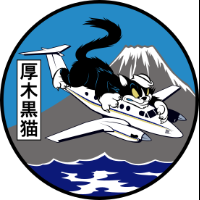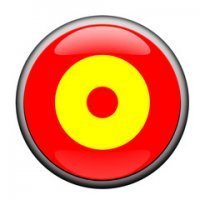

MVW
Members-
Posts
87 -
Joined
-
Last visited
Profile Information
-
Gender
Male
-
Location
Switzerland
Recent Profile Visitors
721 profile views
MVW's Achievements

New Member (2/9)
94
Reputation
-
Hello, recently I came along a photo showing the cockpit of USAF F-15C with a new display on the upper right side of the front panel. It's called the PAD upgrade. The most actual book about the F-15 I have is the Reid Air publication, but there's no mention of it. So my questions are: When took this upgrade happen? Was it / is it fitted to all USAF F-15C or is there a list which serials got them? Thank you for putting light to this. Sincerely, Martin
-
Hello again, I have a general arrangement plan where the nose tip is described as STA100. After checking that, on the same plan I found an indication of the wheel / tyre size for both main landing gears: 15.5 x 20 LP Dual. 15.5 x 20 makes no sense to me, I interpret LP Dual as Low Pressure and two wheels. Has anybody a descripton for the 15.5 x 20 ? Best Regards, Martin
-
Hello, the drawings in the Ginter book are too big for 1/72. As Peter O stated correctly, there are station numbers on the plans. The nose tip starts with station number 100, so you can adjust the plans accordingly as I did. Then the kit fits very well with the drawings (and the dimensions), except the wing span which is wrong on the plans and the undersized tyre diameters. I'm a bit suspicious about the nacelles - do they really have those heavy teardrop shaped sections as on the plans? For me the pictures show only modest teardrop section shapes if at all. Something I have to take a closer look.... Martin
-
Hello, as already reported above in this thread: The mainwheels of the F-84F and RF-84F are different. The F-84F has kind of a spoked wheel as found in the Italeri kits (both F and RF) and the forthcoming SH kit. The RF-84F has kind of a disc wheel, as found in the Sword kits (F and RF). The best comparison I have found so far is on primeportal(dot)net . Go to the references of the F-84F and RF-84F from the Bruxelles Museum. As far as I can judge from historical photos the each have the right mainwheels for their version. What remains a mystery for me: Why and when did this change happen? Best Regards, Martin
-

1/72 - Republic F-84F Thunderstreak by Sword Models - released
MVW replied to Homebee's topic in The Rumourmonger
Hello, found some time to look at Sword’s F-84F which I received yesterday. Three points I’d like to share: The fuselage length is about 3.5mm to short. T.O.1F-84F-3 « Handbook Structural Repair Instructions » gives a fuselage length of 461inches (from intake lip to end of exhaust cover). That’s 162.63mm in 1/72. The missing length is between the rear end of the airbrakes and start of the fin. As reported elsewhere on Britmodeller, there are at least 2 main wheel hub designs. One for the F-84F and one for the RF-84F. As far as I can see form pictures I have, Swords F-84F mainwheels are RF-84F style mainwheels. The pictures from Special Hobby’s forthcoming F-84F show, in my opinion, the correct hub design for a F-84F. The front wheel has two different mudguard designs: One with quite fine mudguard braces and one with braces made from pressed sheet metal. Both designs can be found on the F-84F as well as the RF-84F. I suspect the sheet metal braced mudguard is of later design, maybe retrofitted to the F-84F/RF-84F fleets. I’m happy for any further clarification on these topics. Best Regards, Martin- 114 replies
-
- 4
-

-
- F-84F
- Thunderstreak
-
(and 1 more)
Tagged with:
-
Hello, now the facts are here, just for the record I'd like to mention a book where the larger intakes are mentioned: Roger Lindsay, "Service history of the Gloster Javelin Marks 1 to 6" from around 1975, page 6: "XA560 had the distinction of becoming the prototype for the Javelin 7, fitted with Sapphire A.S.Sa 7 engines, each developing almost 11,000lb. static thrust, and necessitating larger diameter intakes and revised jet pipes. Maiden flight with these engines took place on September 30th 1955, and marked the beginning of a 4-year period of Armstrong-Siddeley engine development for this machine, for most of which it was fitted with Sapphire 7R limited reheat engines later standardised for the Javelin 8 and 9. Mainly based at Bitteswell it became a familiar sight and sound over the Midlands as it "banged" its way through the sky. Interestingly enough '560 was originally scheduled as a test bed for the Rolls-Royce Conway engine." Martin
-
Hello, I do not support the fuselage being short. Years ago, there was the same discussion about Italeri's Mirage 2000 being too long. It's all about is the length quoted with or without pitot? To overcome this: The wheel base of the 2000 is quoted as 5'000mm (69.44mm in 1/72). If you adjust the size of above picture accordingly, length from exhaust to nose tip is pretty 200mm in 1/72 which equals to the quoted length of 14'360mm. Overlaid on the kit the length and proportions are OK. Regards, Martin Source: Checklist #2 Mirage 2000 by Philippe Roman & Alain Crosnier
-

1/72 - Northrop (R)F-5E & F Tiger II by DreamModel - F-5E & F-5F released
MVW replied to Homebee's topic in The Rumourmonger
Hello, I got my copy last week and I'm, neutrally spoken, not impressed. The panel lines are OK, to my taste a bit on the heavy side. Shapewise, the kit seems to be a clone of the Hobby Boss F-5E with all its shape inaccuracies. The windshield is too blunt, the canopy too wide and wrong in shape at the junction to the cockpit sills. The whole spine is too rounded in section, whereas its sides should be more flat. That's the reason why the "dents" just aft of the canopy are almost absent - there is no geometrical transition from the rounded canopy shape to the flat-sided spine. All things which look right on the Italeri kit. You can solve these issues by using an Italeri windshield and canopy and by reshaping the spine, or ... The shallow cannon ports are also pure Hobby Boss. Together with the poorly detailed cockpit, I see at present no reason why to buy a second one or the F-5F kit. For me it's an "almost" F-5E; sadly missing its attractive shape by a wide margin. unimpressed Martin- 103 replies
-
- 10
-

-

-
- Tiger
- DreamModel
-
(and 1 more)
Tagged with:
-

1/72 - Dassault Mirage IIIB by Modelsvit - released
MVW replied to Homebee's topic in The Rumourmonger
Hello, I'm looking forward to this ... Unfortunately one point Modelsvit didn't capture right: Judging from the sprue pictures the main gear strut and wheel are from the IIIE and not IIIC or B. See picture below what I mean. To my knowledge all IIIB's had IIIC legs and wheels, the exception were the fiour Swiss IIIBS which were actually IIIS with a IIIB front fuselage. Wheel size is the same, the IIIE had a different brake drum arrangement. Regards, Martin -
Hello Serkan, a hi-res copy of one of the plans shown can be purchased: http://www.aerospaceprojectsreview.com/catalog/drawndoc.htm http://www.aerospaceprojectsreview.com/catalog/airdwg33.jpg Thanks for sharing your building experience, pure inspiration! Regards, Martin
-

1/72 - Douglas A-4E/F/M Skyhawk by HobbyBoss - released
MVW replied to Homebee's topic in The Rumourmonger
Hello, got my Hobbyboss A-4E from a friend on a business trip to China. In my opinion, the kit looks like an A-4 but only just. The upper profile of the nose is like the Exci one - straight while it should be a subtle curve. Like the Fujimi kit, the blending of the air intakes into the fuselage ends to far aft and the exhaust area is too fat. According to Isradecals A-4 publication, page 106, the outer diameter of the extended exhaust pipe is 54.7cm, which is around 7.6mm for 1/72. There is a wedge shaped spacer between pipe and fuselage, I suspect the fuselage diameter is around 8mm there. My favourite A-4 in 1/72 is a kitbash of Fujimi and Esci: Front fuselage, wings and landing gear from Fujimi, aft fuselage and horizontal tail from Esci. Regards, Martin- 126 replies
-
- 4
-

-

-
- Skyhawk
- Hobby Boss
-
(and 1 more)
Tagged with:
-

A 1/72 Gloster Javelin that isn't rubbish
MVW replied to Harry_the_Spider's topic in Aircraft Cold War
Hello, some pictures from Duxfords FAW 9. You can clearly see the aft end of the fuselage has quite complex curvatures. I don't think the HPM insert got it right, but I will buy one anyway just for the beautiful afterburner cans... I you search Flickr for "Gloster Javelin" you will find pictures of XH767 without jet engines and get a good impression of it's fuselage cross section when the exhaust pipes start. Best Regards, Martin P.S.: A big version of the picture is available one Flickr. Just search for "Javelin FAW.9 Duxford". -
Hope this rumour comes true ... most appreciated when realized! Greetings Martin
-

1/72 - Tupolev Tu-128M "Fiddler" & UT "Pelican" by Trumpeter - released
MVW replied to Homebee's topic in The Rumourmonger
Dear Serge, thank you very much for the translation. I assume now zero is the nose tip or close to it, as it does make sense when comparing the dimensions with photos. As seen on other aircraft, zero or frame zero is sometimes arbitrary (so it seems to me) defined by the aircraft maker. Regards, Martin



